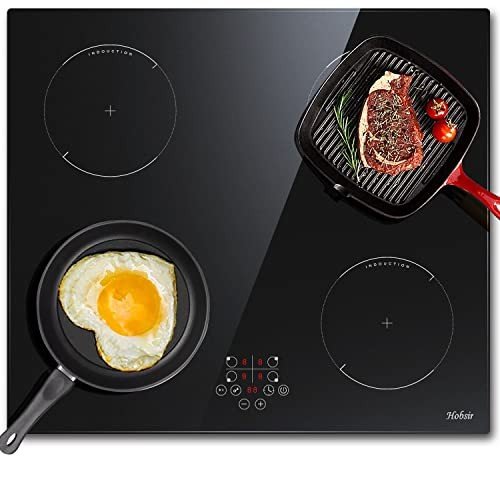The Essential Guide to Oven Hobs: Selecting the Right One for Your Kitchen
When it concerns home cooking, few home appliances are as important as the oven hob. This flexible piece of equipment is important for a variety of cooking methods-- boiling, frying, simmering, and sautéing. Given the myriad of choices readily available on the marketplace, selecting the ideal oven hob for one's kitchen can be daunting. This post intends to supply an in-depth look at oven hobs, discussing their types, functionalities, advantages, downsides, and crucial considerations when purchasing one.
Comprehending Oven Hobs
Oven hobs, commonly called cooktops, are flat cooking platforms that feature burners or heating aspects. They can be integrated with an oven or stand-alone. The option of an oven hob can significantly affect cooking performance and benefit.
Types of Oven Hobs
Oven hobs come in numerous types, each with unique features. Below are the most typical types available:
| Type | Description | Benefits | Downsides |
|---|---|---|---|
| Gas Hobs | Uses natural gas or gas | Immediate heat and exact temperature level control; works well with all pots and pans | Needs a gas connection; less energy-efficient than electric |
| Electric Hobs | Use electric coils or radiant heat | Easy to clean up; consistent heat circulation | Slower to warm up; can be less responsive than gas |
| Induction Hobs | Utilizes magnetic fields to heat cookware straight | Fast cooking; energy-efficient; easy to tidy | Needs compatible pots and pans; generally more costly |
| Ceramic Hobs | Flat glass-ceramic surface with convected heat | Visually pleasing; simple to tidy | Can be susceptible to scratching; slower to heat than induction |
Key Features of Oven Hobs
When selecting an oven hob, several functions need to be considered:
- Size & & Configuration: Available in various sizes, oven hobs can accommodate numerous pots and pans. Basic alternatives are typically 30, 36, or 48 inches broad.
- Power Output: Look for hobs with differing power levels for different cooking processes. High-powered burners are outstanding for boiling, while lower-power ones can be utilized for simmering.
- Control Types: Choose between knob controls and touch controls. Knobs supply tactile feedback, while touch controls provide smooth styles and additional functionalities.
- Safety Features: Options like automated shut-off, kid locks, and flame failure gadgets are vital for preventing mishaps.
- Reduce of Cleaning: Choose designs with smooth surface areas or detachable parts for easy upkeep.
Benefits and Disadvantages
Understanding the benefits and drawbacks of various oven hobs can help in making a notified decision.
Benefits
- Adaptability: Suitable for numerous cooking methods, from boiling to frying.
- Speed: Many hobs heat quickly, especially induction designs.
- Energy Efficiency: Some alternatives, like induction hobs, can minimize energy intake compared to conventional techniques.
Drawbacks
- Cost: High-end designs, especially induction hobs, can be expensive.
- Installation: Gas hobs require professional setup and a gas supply, which might sustain extra costs.
- Compatibility: Not all cookware deals with induction hobs, demanding additional purchases.
Purchasing Considerations
When picking an oven hob, think about the list below aspects:
- Cooking Style: Assess how typically and what sort of cooking you do to determine the very best hob type.
- Kitchen Layout: Measure your kitchen area to make sure the hob fits and complements other devices.
- Spending plan: Determine how much you are prepared to invest. Aspect in installation and the expense of any essential cookware.
- Energy Source: Evaluate the availability of gas or the electrical capability of your kitchen to decide between gas and electric options.
FAQs About Oven Hobs
Q1: What is the distinction between a cooktop and an oven hob?A cooktop and an oven hob usually describe the exact same device. However,"cooktop "is a wider term that includes both standalone hobs and integrated systems with ovens. Q2: Can I utilize any cookware on an induction
hob?No, induction hobs require ferrous( magnetic)pots and pans
to work. Pots and pans made from material like stainless steel or cast iron is ideal, while aluminum and copper without magnetic properties are not. Q3: How do I tidy my oven hob properly?Cleaning approaches depend on the kind of hob.
Usually, a moist cloth and mild cleaning agent work for glass-ceramic surface areas, while a specific hob cleaner is perfect for induction. Ovens & Hobs require taking apart burners for extensive cleansing. Q4: Are induction hobs safe for cooking?Yes, induction hobs are typically much safer than gas hobs as they do not produce an open flame,and the surface cools down quickly. A lot of designs likewise include kid security locks. Q5: How frequently should I change my oven hob?The lifespan of an oven hob differs based on the type and usage. Normally, they last around 10 to 15 years.
Routine upkeep can help extend this duration. Choosing the ideal oven hob for your home can considerably enhance your cooking experience. With a comprehensive understanding of the types, functions, advantages, and considerations, anyone can make an educated choice. From the high heat of gas to the performance of induction, there is a hob suited to every culinary need. Ultimately, the right oven hob can transform cooking from an ordinary task into an art kind, allowing cooking enthusiasts to develop tasty meals with ease.

